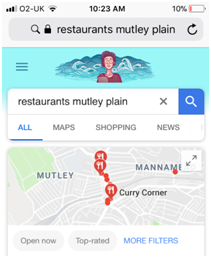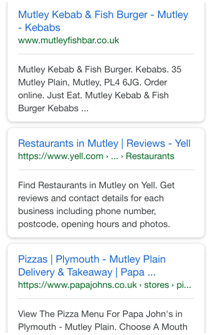
It is likely that if you are reading this, you’ve heard of ‘local SEO’ and have an understanding of the importance for certain businesses to optimize their web presence to rank for locally specific searches.
In a nutshell, ‘hyperlocal SEO’ is doing the same kind of optimization, but for smaller, more focused localities such as neighborhoods, towns, streets, and spots located near well-known landmarks – rather than ‘local SEO’, which would normally stop at cities, districts, or regions.
The benefits are clear: the search journey is simpler for your customer, it’s easier to compete with other businesses for more niche hyperlocal search terms, and it should lead to more footfall to your door.
Google is also aware of these benefits. In recent years it has responded to the mobile habits of users who are increasingly searching for businesses ‘near me’ or ‘near to…’ and who are more often using hyperlocal locations in their phrases.
Today, Google rewards those sites who have serious hyperlocal SEO game by (in order of mobile search display) by:
1. Highlighting them on Google’s map
A quick restaurant search of the hyperlocal Mutley Plain area of Plymouth.
2. Including them in the ‘3-pack’ box-out listings
The ‘3-pack’ results for the same search.
3. Ranking them well
The listing results. Note Mutley Kebabs beating Yell and Papa Johns due to the titles, URL and description including the hyperlocal phrases ‘mutley’ and mutley plain’.
Additionally, if Google understands you as a trustworthy (or, the sole) example of a business thanks to good hyperlocal SEO, it will also ensure call-to-actions (such as call, directions, share, website) are displayed promptly in the search results for your customer to click on.
So how do you do it?
Getting started with hyperlocal SEO is all about ensuring it is easy for Google to




